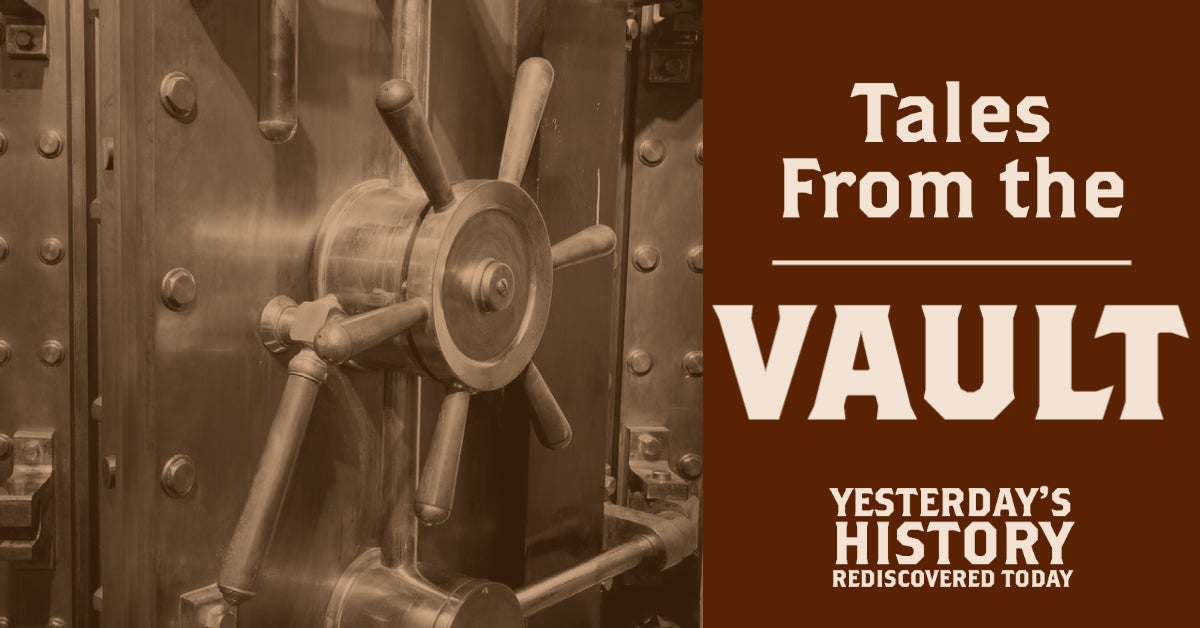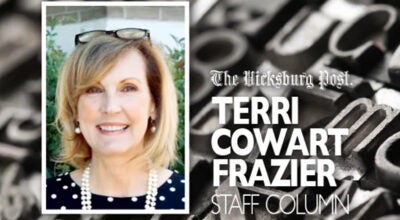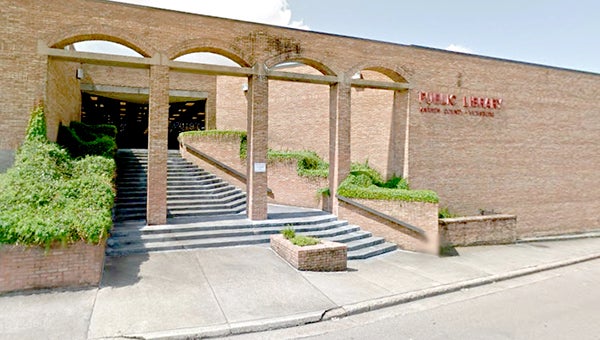FROM THE VAULT: Ray Cato’s lifetime behind the wheel
Published 10:00 am Saturday, February 18, 2023
By the Late Gordon Cotton | Originally published in The Vicksburg Post on March 10, 2013.
When you have racing in your blood it’s a thrill to get into the driver’s seat of a race car, Ray Cato said, and, “You can’t imagine how much joy it brought to me — but there’s still a lot of fear. You’re scared to death.”
But when you’re committed, he said, you might as well be committed 100 percent.
“My butterflies would go away just as soon as they would drop a flag,” he said. “When you see that green flag come down, all that went away. You didn’t think about being afraid, you didn’t have time, you were racing.”
Ray spent a good part of his 69 years behind the wheel and on the tracks that included drag racing, round tracks, boat racing, stock car racing — even a stint with NASCAR.
It all began, however, with go-carts that came out about 1957, he said, “and I had a fit.”
With the help of his mother he managed to get one and though it wasn’t very expensive, “it was a go-cart.”
The popularity of the vehicles grew rapidly, and more and more kids were getting them.
Soon the city donated traffic cones and hay bales to make a temporary track on the Cooper High School parking lot. Tracks were built in Laurel, Hattiesburg, Jackson, Monroe, Greenville, Greenwood and all up and down the Gulf Coast.
Ray was one of several youngsters whom Neal Carmathan took, along with his son, to races on weekends. Ray’s go-cart was a single axel without much pull, but Carmathan offered to let him drive his, a much better machine.
“I got to loving it,” Ray said.
He had gotten better and better at racing and he won the Tri-National championship at Baton Rouge in 1959.
“It was great,” he said. “And I just kept wanting to go faster and faster and faster. I just couldn’t go fast enough. If you went fast you wanted to go faster.”
Ray and his go-cart regularly crossed the old Mississippi River bridge when he’d go to Louisiana to race on the Fordice mat fields. There was a charge to cross the bridge in those days, but the toll collectors just waved Ray on, advising him, “If you’re crazy enough to ride that thing across there, go ahead. It ain’t going to cost you nothing.”
“You can imagine how big a transport looked,” Ray said. “I wouldn’t think about doing anything that stupid today.”
The top speed he reached in a go-cart was 115 mph.
He was still in his teens — he started racing at 13 — when he went from go-carts to boats, racing for Floyd Newman at Valley Park, running in river marathons and on various lakes. After a few years, he decided to try drag racing, but it was too costly and didn’t last long enough — “You were in there for just a few seconds.”
There were stock car races going on in Jackson and Ray had seen the cars coming through from Louisiana on Saturday afternoons, so he would hang out at the bridge and catch rides with the drivers.
He started asking them, “Just let me take it around, just let me take it around, and so they nicknamed me Round Man,” he said.
He eventually had enough time behind the wheel that it was obvious he had a knack for driving. His first car, a six-pack, was running against V8s and “it was unbeatable.”
The car was put together by Bobby Harrelson who had a speed shop in Jackson.
“It was a super race car,” he said. “I just started from there,” going from a race track on Highway 49 north of Jackson in 1967 to an asphalt track on 1-20.
From there Ray went to Greenville, then over to Lousiana. Jimmy Walker of Walker Farms in Stoneville “spent some good money on us, built some nice cars, had a lot of success.”
Ray then got involved in ownership and drove a car for Pete Williams of Greenville. Ray and a friend owned a car together, but about 1968 it had gotten to the point where “I had blown every engine I had. We couldn’t find an engine to stay under us nowhere.”
That’s when the owner of a construction company in Memphis offered to furnish a car if Ray would drive for him — No. 47, for two years “and had a lot of success.”
Ray later drove for Jimmy Utz of Kosciusko, driving a modified car — “That’s a car where you can have any width tire, any cubic techniques, any length,” and he won the 1970 Mississippi Modified Championship.
“I was sponsored by Atwood Chevrolet, and I was the only guy Emmett Atwood ever put a penny on as far as racing cars,” Ray said, and he’s convinced that “there was never a finer product made for racing than a Chevrolet.”
Ray usually had sponsors and he remembers that it was about 1961 that he had to build his own car. To do that, he said, you start with a basic car, knock out all the glass and windows, put in a seat and a seat belt, “and try to make it go round in circles.”
In his 22 years in racing — his last was in 1981 — Ray had some close calls, but the worst injury he ever had was that he broke his thumb several times.
“You win trophies, you win money, and sometimes you have sponsors,” he said, and though today there is training for young drivers when he was growing up “You learned it through the seat of your britches. You’ve got to have luck on your side, but you can’t just sit and wait for it to come to you.
“Take advantage of it when it’s there — in a split second, no time to think,” he added.
Ray had rather race when the other cars didn’t have numbers or colors because then he didn’t know who was in them. If there were friends behind the wheel, he didn’t know it because “I just did not look at other people and have to give them a break because of who they were because I didn’t care. I went there to race. I didn’t go there to play.”
Ray tried NASCAR for a season, but he found the expenses prohibitive if you didn’t have a sponsor. He had an offer from STP, but the details were too demanding, plus he had a regular job in Vicksburg where he was the millwright general foreman for Bechtel, making him “a weekend warrior” when it came to racing.
His favorite driver?
“Every one of ’em,” he said. “It takes every one of ’em out there to make that race happen. I appreciate every one of ’em, everything they do.”
As an example, he pointed out that his wife, Linda, is a Tony Stewart fan and that “She beats the furniture half to death and raises hell with everybody on TV if something happens to Tony, but like I tell her, if you went to Talladega and spent $100 to go to the race would you sit in that stand and watch Tony go around and around by himself? Ain’t no way!” (Linda interjected, “I might!”)
Ray grew up in Vicksburg and went to Jett High School, “But I cut school short. I was in a hurry to get to more important things.”
He’s won hundreds of trophies and has been given two keys to the City of Vicksburg, “But neither of them work.”
He’s been featured in several books on racing, and the dean of racing writers, Gerald Hodges from Florida, recently came to Vicksburg to interview Ray for an upcoming volume. Ray feels “honored that he came by and talked to me.”
Not only are Ray’s racing achievements chronicled in books, but a few months ago he sent his last car to be exhibited in the racing museum taking shape in Tupelo. For 18 years he never took a vacation “because I was either racing or building a car for the next race. Even in the winter months, you were getting ready for the next year.”
In 2012 Ray went to two races in Greenville, and though it’s still a thrill, he admits, “I hate watching somebody race. To me, it’s like a starving man watching somebody eating a steak. You want it and you can’t get to it. It’s hard to sit there are watch somebody doing what you want to do, especially if you’ve been a driver like I have been all my life. I’ll never quit racing in my mind.”
Gordon Cotton (1936-2021) was a Vicksburg and Warren County icon who spent a lifetime learning and sharing history.






